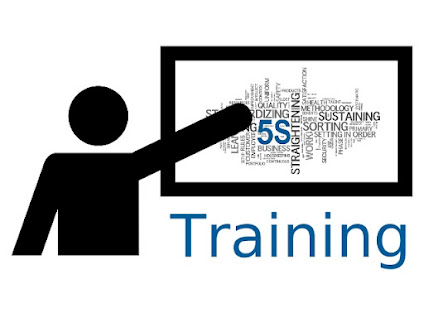7 QC Tools Training Demystified: A Step-by-Step Guide to Quality Improvement
Are you looking to improve the
quality of your products and services? If so, 7 QC Tools Training is a great way to get started.
Quality control (QC) tools are used by organizations around the world to help
identify problems and opportunities for improvement in their operations. But
what exactly is 7 QC Tools Training? And how can it benefit your business?
7 QC Tools Training provides an
introduction to seven basic quality control tools: check sheets,
cause-and-effect diagrams (also known as Ishikawa or fishbone diagrams), Pareto
charts, histograms, scatter plots & graphs, flowcharts, and measurement system
analysis training. These seven simple but powerful tools provide a systematic
approach to problem-solving that can be applied across many different
industries from manufacturing to healthcare. Each tool has its own specific
purpose within the overall framework of improving product or service
performance through better data collection methods and analysis techniques.
The first step in any successful 7 QC Tool program is understanding each individual tool’s
purpose and function within the larger context of improving product/service
quality assurance processes throughout your organization's value stream(s).
Check sheets allow you to quickly capture large amounts of data without having
too much detail; cause-and-effect diagrams show relationships between variables
that may affect production outcomes; Pareto charts display frequency
distributions with relative importance; histograms measure process variability
over time; scatter plots & graphs compare two sets of values visually,
while flowcharts demonstrate sequential steps in a process sequence—all useful
information when trying to understand where potential issues may lie along with
possible solutions.
Also Read: Measurement System Analysis Training
Lastly, measurement system analysis
training helps assess whether existing measuring systems are accurate enough
for effective decision-making purposes before implementing corrective actions
if necessary.
Once each individual tool’s purpose
has been understood, then comes implementation - which requires proper planning
prior to execution, such as determining who will use them, when they should be
used, what type of results need collecting, etc. This includes creating
templates or forms associated with these documents; setting up databases;
establishing procedures on how collected data will be analyzed, etc. It also
requires everyone involved to be trained on both proper usage/interpretation
and understanding why their role matters in order for these efforts towards
continuous improvement initiatives to become successful long-term.
Overall, 7 QC Tools Training offers an efficient way not only to
identify potential areas needing improvements but also allows companies to
focus resources more effectively towards achieving desired goals faster than
traditional means alone would have allowed previously.




Comments
Post a Comment